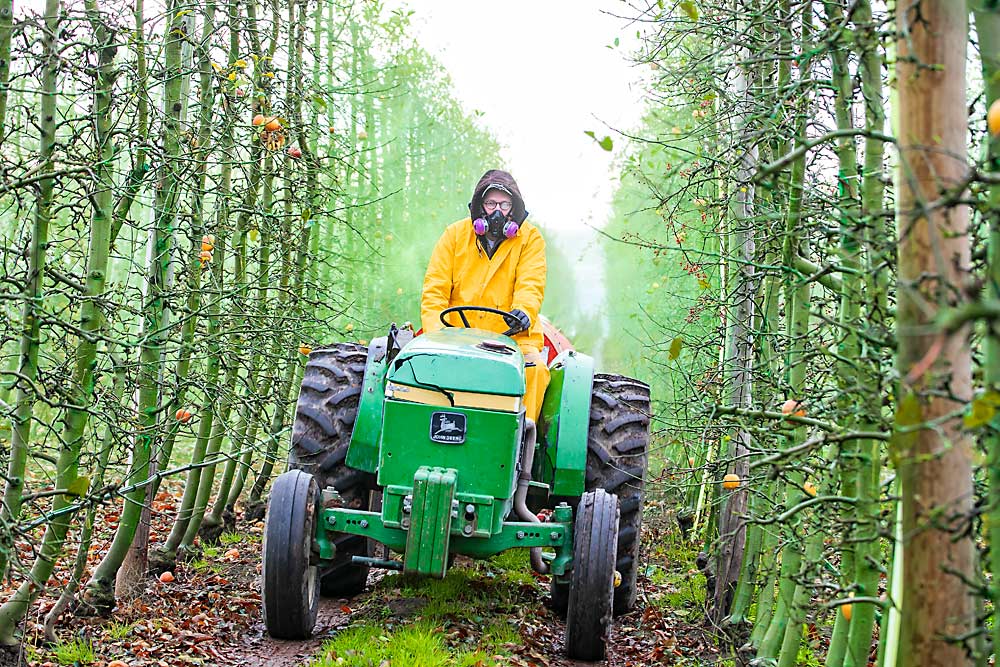
It’s probably rare for public health researchers to drive a spray rig.
But don’t tell Eddie Kasner, a researcher and director of outreach for the Pacific Northwest Agricultural Safety and Health Center at the University of Washington, who drove the sprayer during the drift data collection.
“I really enjoy working with growers,” he said. “The industry, to its credit, has shown interest in doing this work. Everyone wants workers not to be exposed to drift.”
Kasner collaborated with Washington State University on the trial and collected his own set of data using micronutrient tracers — spray products of zinc or copper — that can be readily detected by a real-time particle monitor. Unlike the passive drift collection tools being used to build the model, the monitor measures in detail about how small changes in wind affect drift, every 5 seconds.
“My research question is really: How does wind impact drift? We know an 8-hour average for the day is not representative, and I think we need to have a real-time scenario so we can help growers make better decisions,” he said.
Some day, particle monitors such as this may be a part of on-farm weather stations and provide real-time wind data to help growers and spray applicators make good decisions, Kasner said.
“This kind of information fits into precision agriculture,” he said. “I’m thinking specifically of the people operating the sprayer — what can help them while they are out there to pick the perfect conditions for spraying.”
—by Kate Prengaman






Leave A Comment